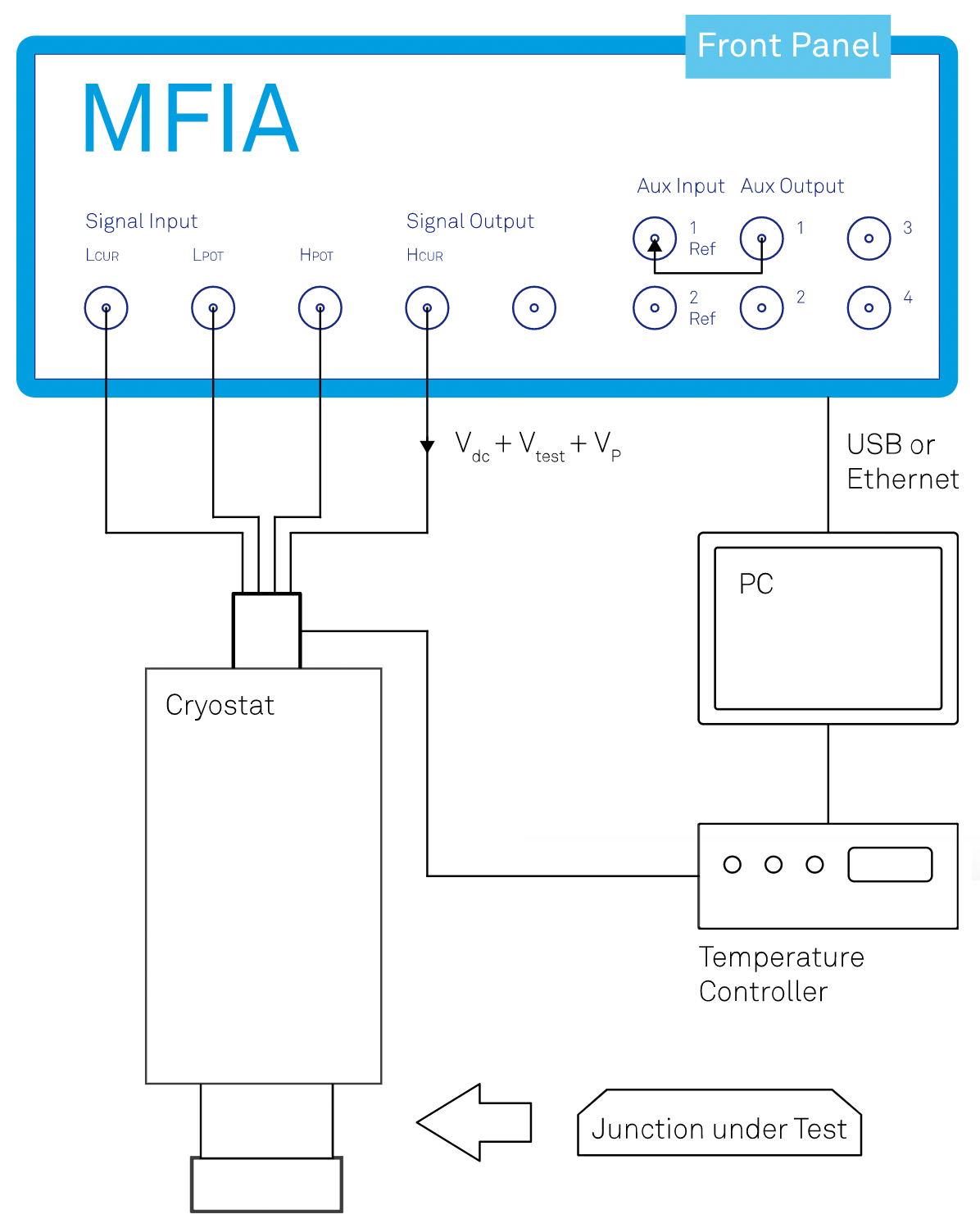
Application Description
DLTS is a powerful and commonly used technique to investigate the concentration and carrier binding energy of defects in semiconductors. The technique involves measuring capacitance transients at different temperatures. The semiconductor junction is initially reverse biased to deplete the bulk of mobile charge carriers; subsequently, as the reverse bias voltage is briefly set to zero by a positive voltage pulse the empty traps are filled. Following the positive voltage pulse, the junction is again reverse biased: charges are gradually emitted and cause a change in capacitance.
Measurement Strategies
The resulting capacitance transients can be measured with the MFIA Impedance Analyzer over a long time interval and with a high temporal resolution to capture a full transient.
The MFIA can measure a capacitance transient at frequencies ranging from 1 mHz to 5 MHz (not just at 1 MHz) on a time scale of 10 us (at 1 MHz). The Data Acquisition (DAQ) module of LabOne® can be triggered either by an external pulse generator or by an internally generated bias pulse. With the DAQ module, the whole transient can be reliably captured at a high temporal resolution and for long-rate windows, including the steady state before the trigger event thanks to the data buffer.
The dual channel lock-in amplifier included in the MFIA can be used to capture the current transient along with the capacitance transient. This can be achieved on a shorter time scale than for capacitance measurements, but does not include information on the absolute capacitance.
The Benefits of Choosing Zurich Instruments
- The MFIA can be considered a superior alternative to the discontinued Boonton 7200 thanks to its integrated digitizer, its wider capacitance measurement range and its flexible working frequency. Furthermore, LabOne comes with a number of tools that allow you to monitor and optimize your experiment.
- The powerful APIs supported by LabOne enable integration of the MFIA into complex experimental setups and temperature control via analog I/O.
- An eight-stage current input guarantees that the instrument is not overloaded when the reverse bias pulse is applied.
